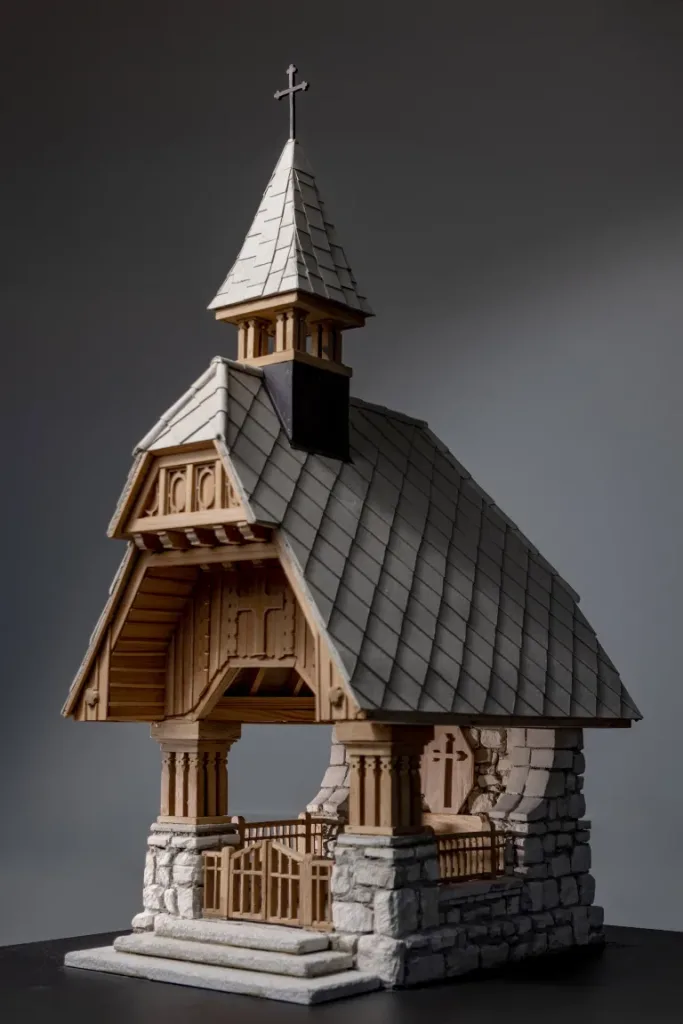Opening of the exhibition ‘Military Field Hospital – Feldspital 808 and its chapel in Kosovelje on the Karst.
In the Park of Military History, on February 6th, the Month of Culture commenced with the opening of a new exhibition titled “Military Field Hospital – Feldspital 808 and its Chapel in Kosovelje on the Karst.” Among the numerous military hospitals that provided healthcare to wounded and sick soldiers in the rear of the Isonzo Front during the First World War, one stood in the village of Kosovelje on the Karst in 1917. The remnants of the remarkable hospital chapel still stand at the site, preventing it from falling into historical oblivion.
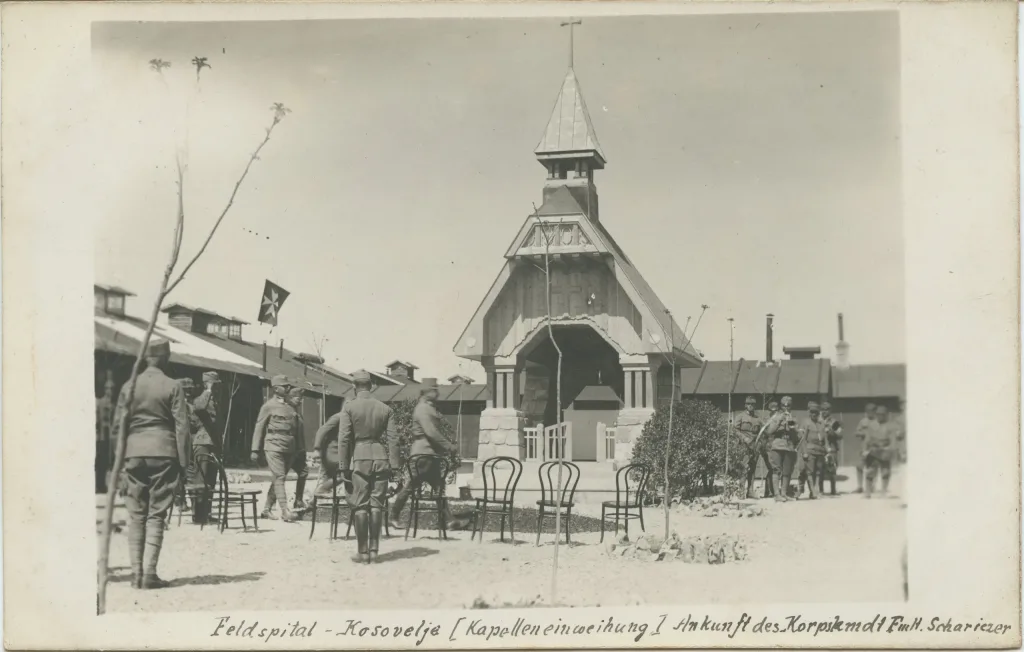
Locals from Kosovelje and surrounding villages, dedicated to reviving the historical memory of the events in their village during the First World War, inspired the Park of Military History for this project. They plan to reconstruct the chapel as a memorial and a reminder of the wartime events. The exhibition on Feldspital 808 is curated by the director of the Park, mag. Janko Boštjančič.
The Austro-Hungarian military field hospital, Feldspital 808, was initially established on the Serbian Front shortly after the war began. However, following Italy’s war declaration, it was relocated to the Isonzo Front. It first stood in Škrbina on the Karst, then temporarily moved to Štanjel. In April 1917, it began operating in Kosovelje, providing 170 beds for the wounded and sick. The hospital complex in Kosovelje consisted of 9 buildings, including four barracks for the wounded, a recovery barrack, an officer’s barrack, an eye clinic, a barrack for patients with hemorrhoids, and a kitchen barrack. After the breakthrough of the front in October 1917, the hospital moved to Motta di Livenza, 40 kilometers northeast of Venice, where it remained until the end of the war.
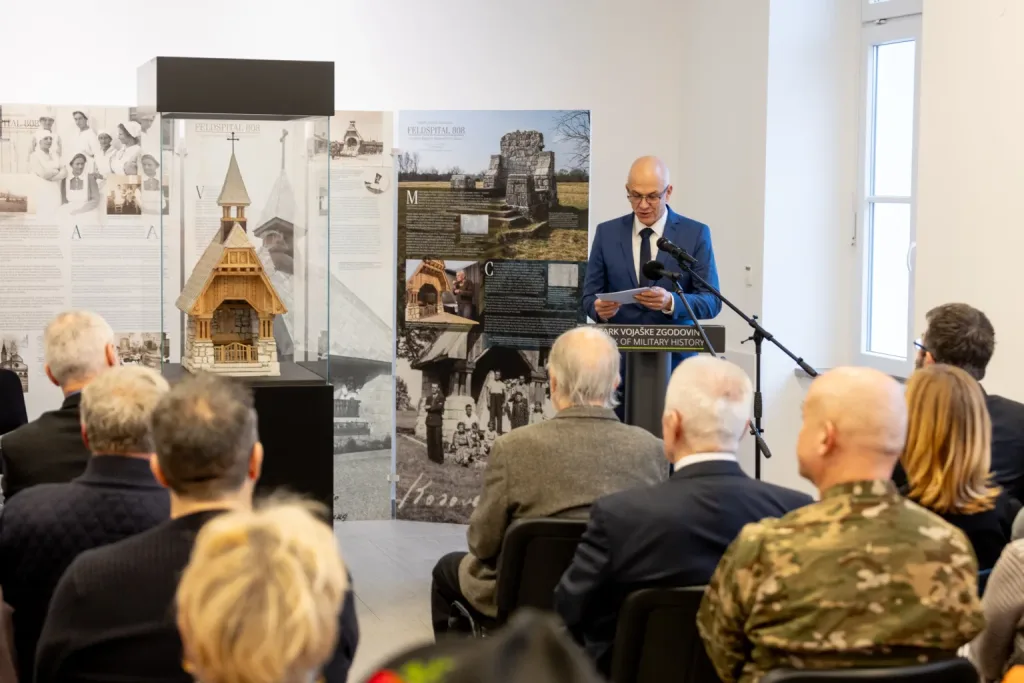
The centerpiece of the Feldspital 808 exhibition is a model of the chapel, erected simultaneously with the hospital barracks in Kosovelje for the spiritual care of the wounded, sick, and hospital staff. The intricately detailed model was crafted by Franci Pogačar from Ljubljana, who invested over 2,500 hours of work. Creating the model posed a significant challenge, as the chapel was demolished after the Second World War, and for a long time, no photographs of it were known. The preparation of the model’s plan was made possible only by the precious discovery of a photo album of Feldspital 808 in Germany, coincidentally found by the renowned collector Marko Mohorčič. Based on these photographs and field measurements, architect Tomaž Bekš from Kosovelje drew up an accurate plan of the chapel, serving as the basis for creating the model.
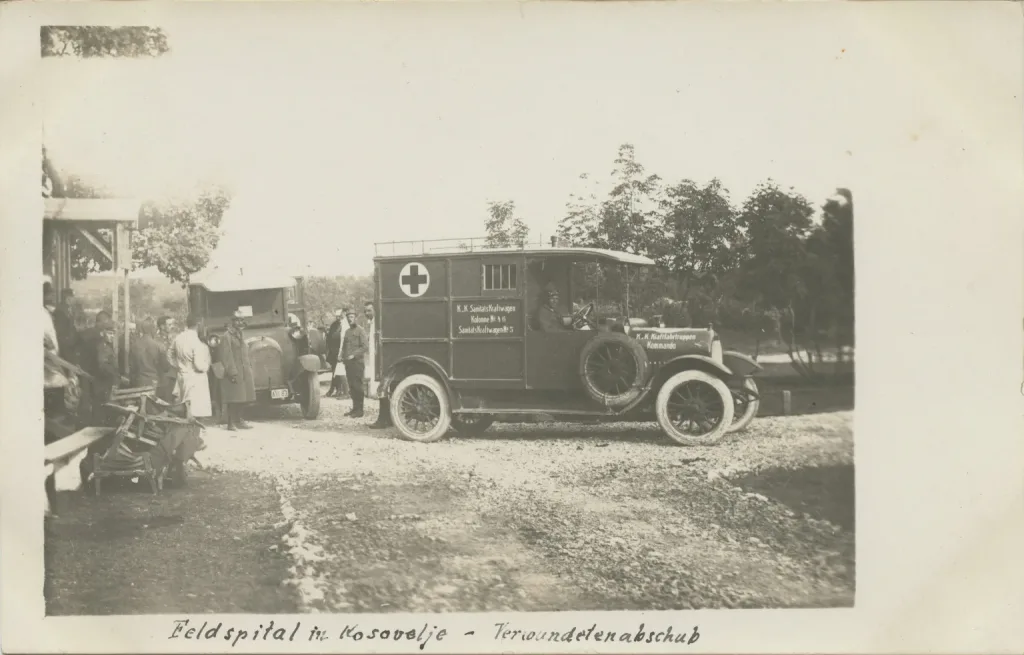
Unpublished photographic material further enriches the exhibition, providing a glimpse into the chapel’s role in providing solace and comfort during the worst of the war’s turbulence. The exhibition design, in a movable panel construction suitable for hosting, was created by Barbara Sirk and Žiga Okorn from Uvid.si. The exhibition setup received support from the Municipality of Sežana, the company Dvig d.o.o. from Vrhnika, the Pliska Development Society, and the companies MISEL d.o.o. and AVTO JEREB d.o.o. Donors from Kosovelje also played a crucial role in the project’s implementation.
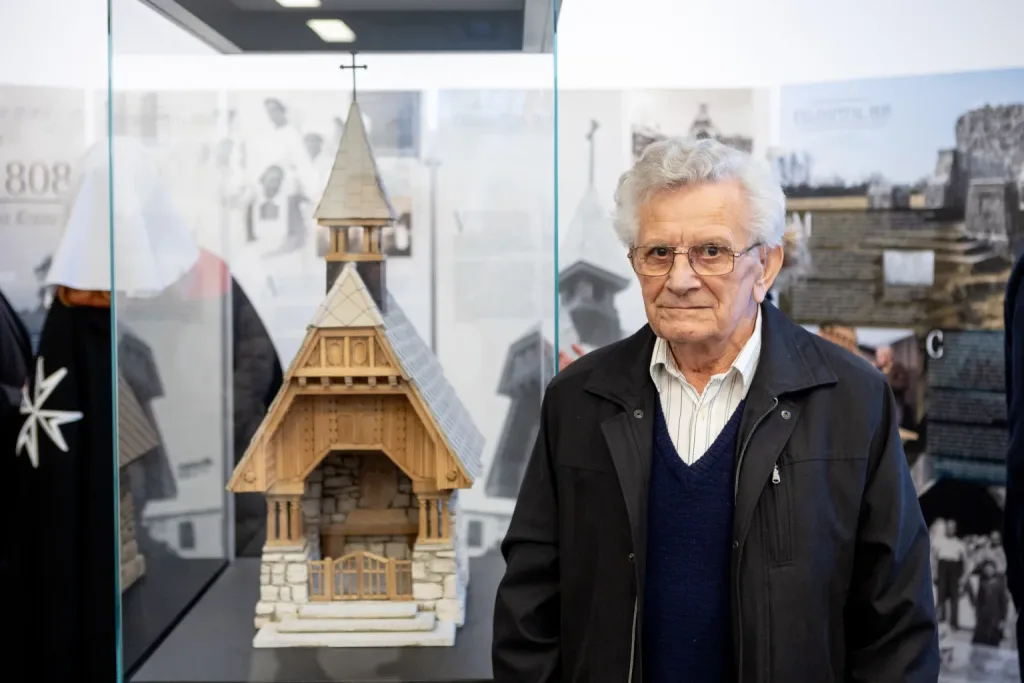
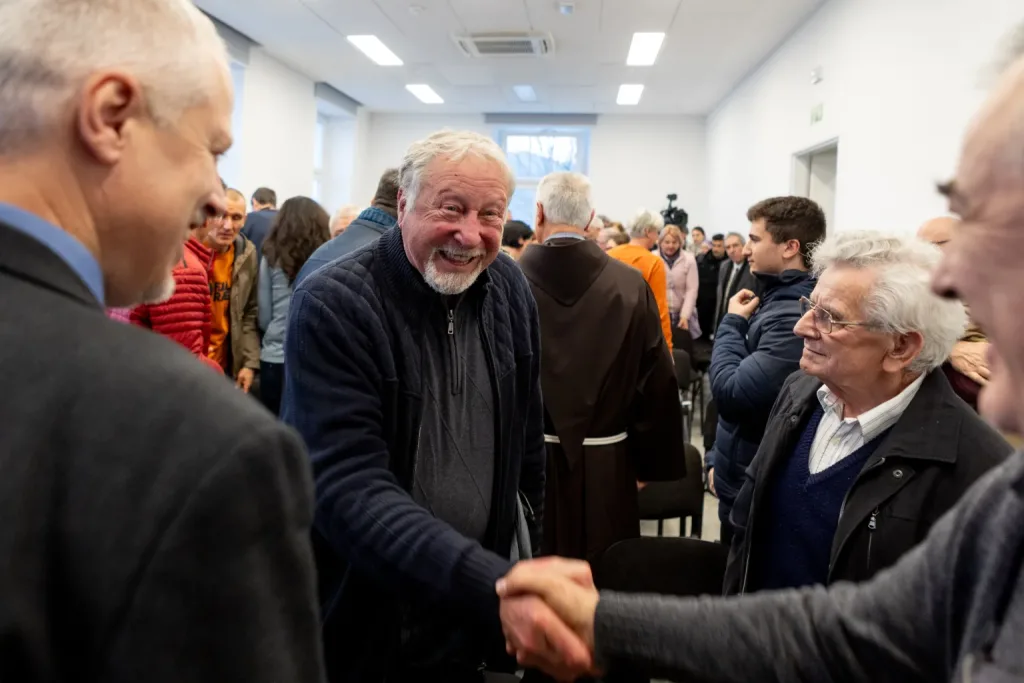
The exhibition opened with a brief ceremony on February 6, 2024, in the Park of Military History. Due to the significant role played by the Maltese Order in the healthcare at Feldspital 808, the exhibition was initially planned to be opened by the Ambassador of the Sovereign Military Order of Malta in the Republic of Slovenia, His Excellency Prince Mariano Hugo von Windisch-Graetz. However, he had to cancel his participation due to unforeseen obligations in Rome. In his absence, Chancellor of the Slovenian Association of the Maltese Order Roman Vučajnk read a speech on his behalf, expressing gratitude and praising the Park for its approach to presenting military-historical heritage with sensitivity to human suffering. Prince Windisch-Graetz emphasized the exhibition’s significance in highlighting the role of the Maltese Order during World War I and called for an end to all wars. Dušan Luin, a local from Kosovelje and one of the main advocates for the chapel’s restoration in Kosovelje, also spoke about the importance of Feldspital 808. Dr. Janez Bogataj, a renowned Slovenian ethnologist, presented the exceptionally creative work of the chapel model’s author, Franci Pogačar, who has been followed for a decade.
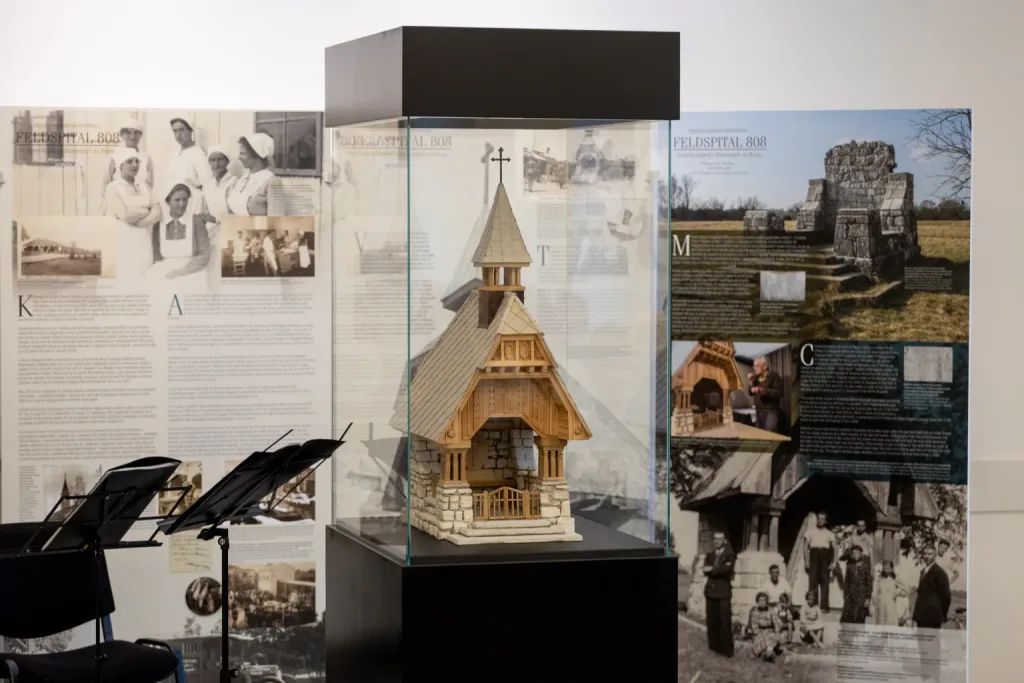
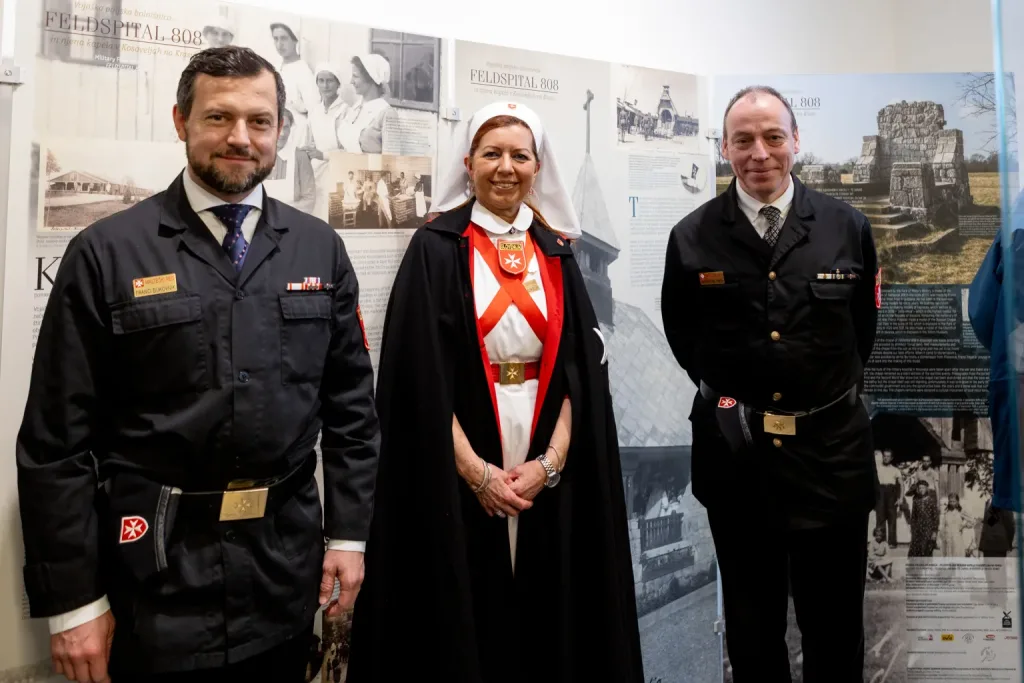
The opening ceremony was attended by Deputy Ambassador of the Slovak Republic Peter Bak, Hungarian Military Attaché Colonel László Kaputa, Mayor of the Municipality of Sežana Andrej Sila, Mayor of the Municipality of Pivka Robert Smrdelj, Commander of the Maltese Aid Society of Slovenia Franci Bukovnik, Chief of the Military Vicariate of the Slovenian Armed Forces Matej Jakopič, representatives from the town of Motta di Livenza, and other distinguished guests. The cultural aspect of the event was enriched by the performance of the instrumental-vocal group “Naši fantje,” consisting of locals from the Karst.
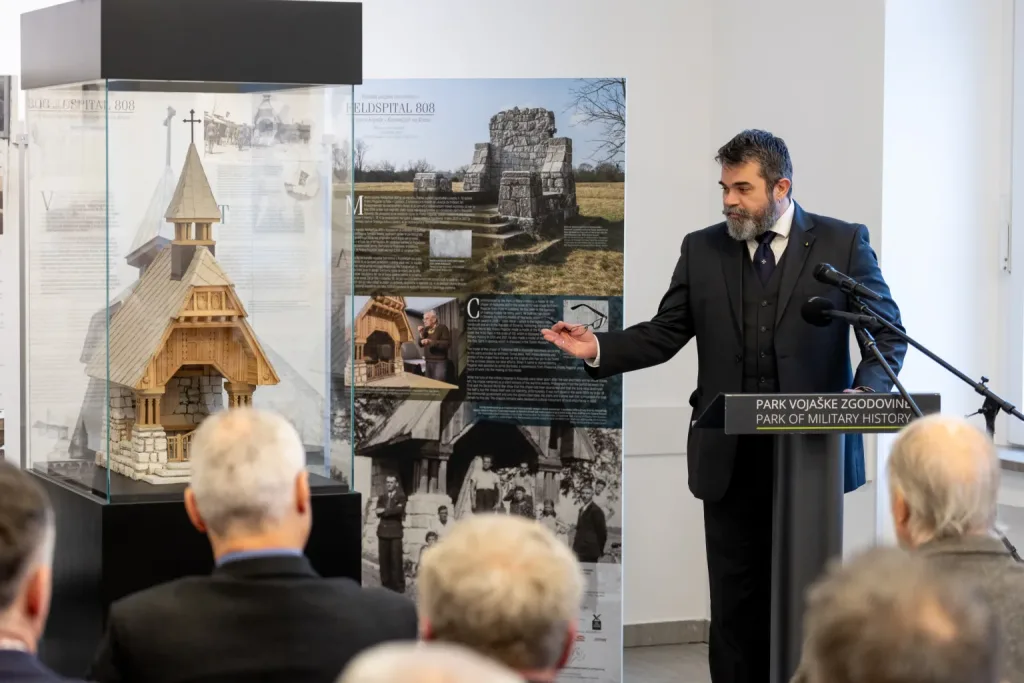
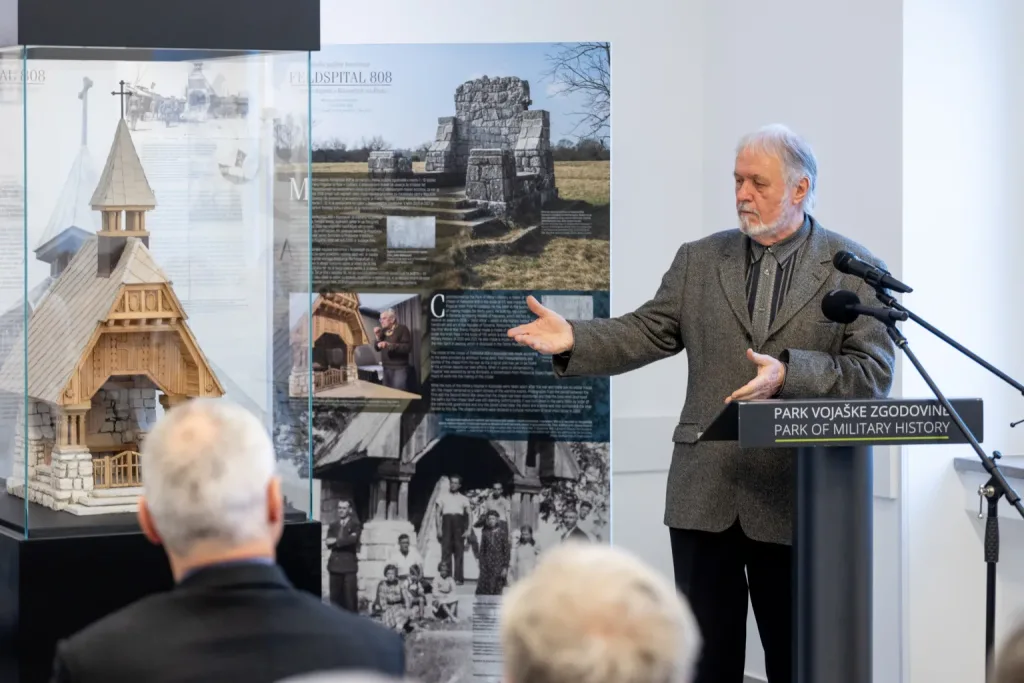
The exhibition “Military Field Hospital – Feldspital 808 and its Chapel in Kosovelje on the Karst” will be on display in the Park for approximately two months before moving to other locations.
